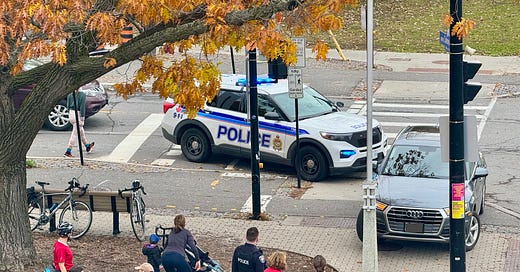Fix Road Safety 1: What’s the Higher Priority – Saving Lives or Driving Faster?
The actions of our cities often reveal an awkward answer
This is the first in a series of common sense solutions to improve road safety for all.
This article borrows from ideas in The Strong Towns Podcast. Conor Semier: A New Decision-Making Framework for Street Design.
Speed
Road safety can be boiled down to one word: speed.
Speed kills. The diagram below from the US National Association of City Transportation Officials shows the likelihood of someone outside a vehicle dying from being hit by a car. And it’s a similar story for people inside cars. But you already knew that.
Priority goes to traffic capacity and speed
When we talk about safe streets, we are really talking about mixed-used streets carrying cars, trucks, cyclists and pedestrians.
If we want to make streets safer, the most important thing we can do is have cars and trucks drive slower.
The problem is that traffic engineers measure success and failure in terms of traffic capacity and driver delays. There is a concept of “Level of Service” that measures how much traffic flows along a road, particularly at peak capacity. If a driver has to wait more than a certain number of seconds at an intersection in peak traffic, then the intersection is considered a failure.
So to avoid failure, we design roads to be wide and straight with lots of turning lanes. We time our lights so that cars and trucks can sail through efficiently.
But designing for peak capacity creates excess capacity during the rest of the day. Excess capacity creates open roads, making them more dangerous for all road users. Wide straight roads causes drivers to travel faster, in turn leading to more crashes and more serious ones.
A new way to measure traffic success or failure
When we focus on traffic capacity, we are prioritizing the convenience of drivers over the safety of all users. We are prioritizing speed over safety.
While every traffic department says that safety is their number one priority, their actions may say otherwise. For example, if we have a four lane street and two of those are reserved for parking, we are saying that convenient parking is more important than the safety of cyclists.
We should be honest about what our priorities are, rather than pretend it is automatically safety. It’s time for a new framework for understanding traffic success or failure.
Framework for understanding trade-offs
A new publication, Roadway Cross-Section Reallocation: A Guide, from the US National Academies of Sciences, Engineering and Medicine provides a framework for understanding the trade-offs in road design and what gets prioritized.
That framework starts by considering different street configurations and the minimum safe design of that street for all users. For example, on streets with cars travelling at 50 km/hour, the minimum safe design requires separated and protected lanes for cyclists.
If safety is our top priority, we would put in the bike lanes on that street. If traffic flow is our top priority and we are unwilling to convert any traffic lanes into bike lanes, we have to accept that the street is not safe and that there will be a certain number of injuries or fatalities.
But that should be a choice that we make explicitly, and recognize that it will result in a level of road violence, rather than pretend that safety is somehow being prioritized. Let’s have politicians and community groups to be explicit about their values and priorities.
Next week, we will look at the 3 Es of road safety – education, enforcement and engineering – and how we tend to get them 100% backwards.







